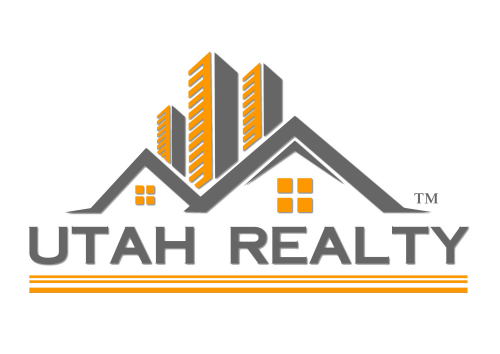
In the ever-evolving landscape of the real estate market, a surprising trend has emerged—one that defies conventional wisdom and prompts a closer examination of underlying factors. This article delves into the complexities behind the seemingly paradoxical phenomenon where home values have experienced an upward trajectory even as median prices display a downward trend. By dissecting the data, analyzing economic indicators, and considering market dynamics, we aim to provide a comprehensive understanding of this dynamic shift. Join us as we explore the intricate relationship between home values and median prices, shedding light on the forces at play in the current real estate environment.
Future Outlook: Predicting Trends In Home Values And Median Prices
As the housing market continues to evolve, several factors are shaping future trends in home values and median prices. One of the significant drivers behind the dynamic shift is the changing demographic of homebuyers. Millennials, now entering their prime homebuying years, are influencing the market in unprecedented ways, including a preference for sustainable and smart homes. Additionally, the remote work trend, accelerated by the global pandemic, has increased demand in suburban and rural areas, previously considered less desirable. This shift in buyer preference is causing home values in these areas to rise, even as median prices across broader markets show a tendency to stabilize or fall. The interplay between supply constraints, due to slower construction rates and zoning regulations, and growing demand in specific market segments, is further complicating the projection of future trends.
Furthermore, the role of technology and data analytics in real estate is becoming increasingly pivotal. Prospective buyers now have more tools at their disposal to make informed decisions, while sellers use data to strategically price homes. This evolution is expected to lead to more efficient transactions and could help in bridging the gap between home values and median prices by creating a more transparent marketplace. Economic factors, including interest rate projections, inflation, and employment rates, will also play a crucial role in shaping the future housing market. As these elements converge, the landscape of home buying and selling is poised for significant changes. The anticipation of these shifts is leading stakeholders to closely monitor market indicators and demographic trends to better predict future movements in home values and median prices.
Impact Of Median Price Reductions On The Housing Market And Buyers
The juxtaposition of rising home values against falling median prices presents a complex dynamic within the housing market that warrants closer examination. Typically, a decrease in median prices would be indicative of a buyer’s market, where buyers have the upper hand due to increased affordability and a wider selection of options. However, the simultaneous increase in home values complicates this scenario, painting a picture of a market that is both lucrative for sellers and potentially advantageous for buyers. This confluence of trends can be attributed to various factors, including shifts in the geographical distribution of demand, changes in the types of homes being sold, and broader economic indicators that influence both buyer behavior and lending practices. The immediate impact on the housing market is a nuanced environment where buyers may find opportunities to purchase homes at lower initial prices, while sellers retain the advantage of long-term asset appreciation.
For buyers, the reduction in median home prices opens the door to opportunities that were previously unattainable for many, particularly first-time buyers and those restricted by tighter financial conditions. It enables a broader demographic to enter the housing market, potentially revitalizing communities and encouraging a more dynamic movement within the market. However, the underlying value appreciation suggests that buyers must also be strategic in their investments, considering not only the current price but the future potential of their home’s value. Meanwhile, sellers might find themselves in a position where they can capitalize on the long-term growth of their property’s value, even if the immediate selling price does not meet their initial expectations. This balance between present cost and future gain is a critical consideration for all parties involved, underscoring the need for informed decision-making based on a comprehensive understanding of local market trends and economic forecasts.
Understanding The Economic Indicators Behind Home Value Fluctuation
The current dynamics in the real estate market reveal a fascinating contradiction — while median home prices are witnessing a downtrend, the intrinsic values of homes are, paradoxically, on the rise. This phenomenon can be attributed to a complex interplay of economic indicators that drive the valuation of property beyond the surface metrics of price alone. Chief among these indicators are interest rates, inventory levels, and the broader economic health encapsulated by consumer confidence and employment rates. Interest rates significantly affect buyers’ purchasing power, thereby influencing home values. As rates decrease, borrowing becomes more affordable, leading to an increase in potential buyers in the market. This heightened demand, even against a backdrop of falling prices, can buoy the value of homes by making them more desirable to a broader base of consumers.
Another critical factor contributing to the nuanced landscape of home value fluctuation is inventory levels. In scenarios where the supply of available homes is limited, a seller’s market is created. Here, even if median prices trend downwards due to macroeconomic pressures, the value of individual homes can appreciate due to scarcity. The tug-of-war between supply and demand underscores the real estate market’s complexity, illustrating that median prices do not always paint a full picture of an individual home’s worth. Furthermore, broader economic indicators, such as consumer confidence and employment rates, play pivotal roles. High employment rates and robust consumer confidence can lead to increased spending power and a greater willingness among the population to invest in real estate, further decoupling the relationship between median prices and home values.
Thus, understanding the undercurrents shaped by these economic indicators is essential for both investors and homeowners. Recognizing that home values are influenced by a far more intricate set of factors than median price movements alone can provide a more nuanced approach to navigating the real estate market’s ebbs and flows. This insight enables stakeholders to make more informed decisions, acknowledging that the true value of property extends beyond immediate price tags to the broader economic landscape in which these transactions occur.
Analyzing The Paradox: Rising Home Values Amid Falling Median Prices
The apparent contradiction between rising home values and falling median prices can be unravelled by understanding the dynamics of the real estate market and the factors influencing these two metrics. Firstly, the rise in home values is often driven by the intrinsic qualities of homes that are becoming increasingly desirable, such as location, size, amenities, and the overall condition of the property. These characteristics can enhance the value of homes, even in a market where the median prices are on a downward trend. This phenomenon is particularly noticeable in regions where there is a scarcity of properties that meet the high demand for premium features, thereby driving up the values of homes that do possess these sought-after qualities.
Moreover, the decline in median prices can sometimes be attributed to an increase in the sales of lower-priced homes or a decrease in the sales of higher-priced homes, rather than a blanket reduction in property values across the board. This can occur in various scenarios, such as economic downturns leading to more foreclosures and short sales at the lower end of the market or a shift in buyer focus towards more affordable housing options. Such shifts can temporarily skew the median price downward, even as the value of well-appointed properties in desirable locations continues to climb. Understanding this dynamic is crucial for investors, homeowners, and market analysts to make informed decisions, as it highlights the importance of looking beyond surface-level statistics to grasp the underlying forces at play in the real estate market.
In conclusion, the evolving landscape of the housing market presents a complex interplay between rising home values and declining median prices, a phenomenon underpinned by a variety of economic indicators. As we’ve explored, this paradox is not only reshaping the market itself but also influencing buyer strategies and future investment prospects. Moving forward, stakeholders must navigate these shifts with a nuanced understanding of the forces at play, leveraging insights into economic trends, consumer behavior, and market dynamics. The ability to adapt to these changing conditions will be paramount for those looking to thrive in an increasingly unpredictable real estate environment.
Marty Gale
Buy or Sell with Marty Gale
"Its The Experience"
Principal Broker and Owner of Utah Realty™
Licensed Since 1986
CERTIFIED LUXURY HOME MARKETING SPECIALIST (CLHM)
PSA (Pricing Strategy Advisor)

General Contractor 2000 (in-active)
e-pro (advanced digital marketing) 2001
Certified Residential Specialist 2009

Certified Negotiation Expert 2014

Master Certified Negotiation Expert 2014
Certified Probate Specialist Since 2018

Senior Real Estate Specialist

Certified Divorce Specialist CDS

Contact me!



